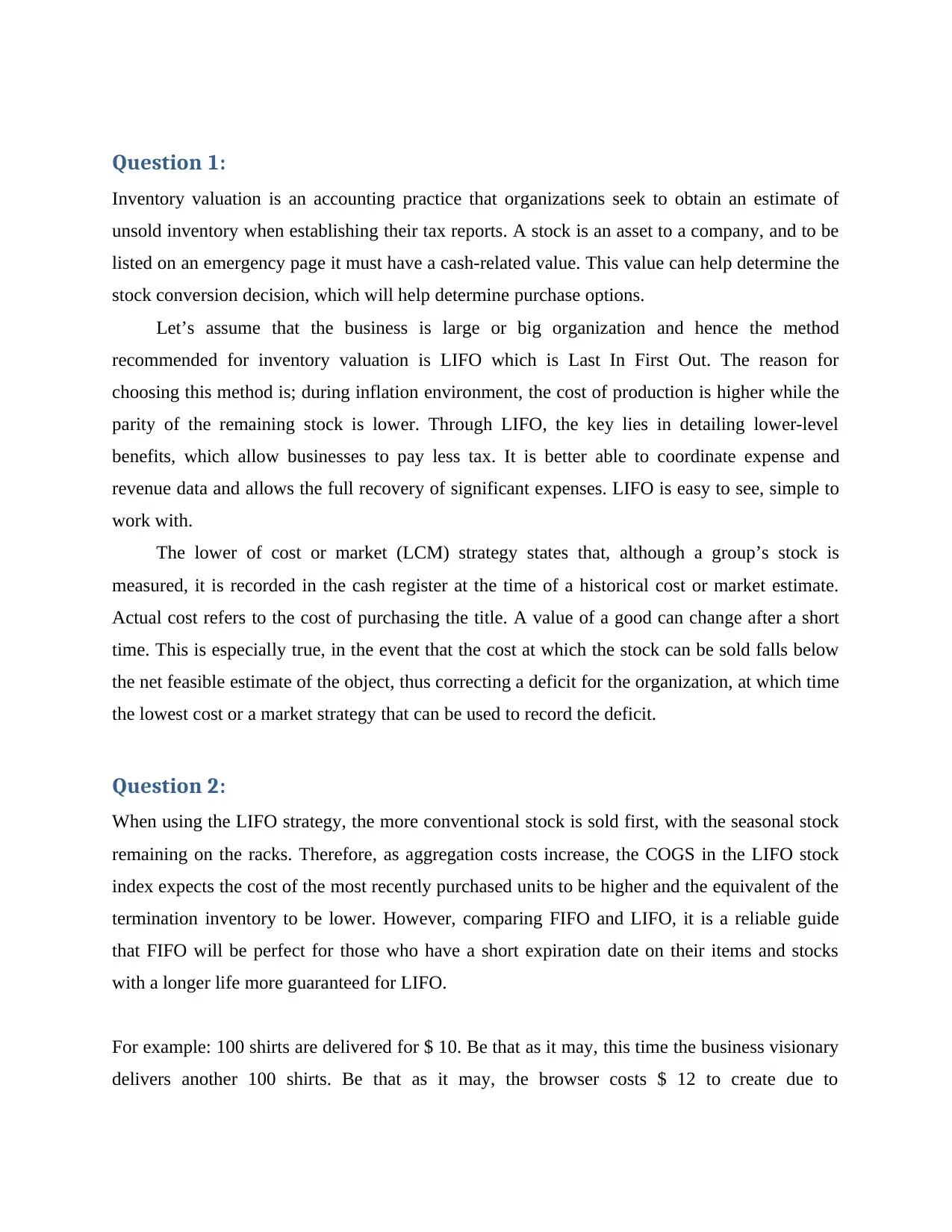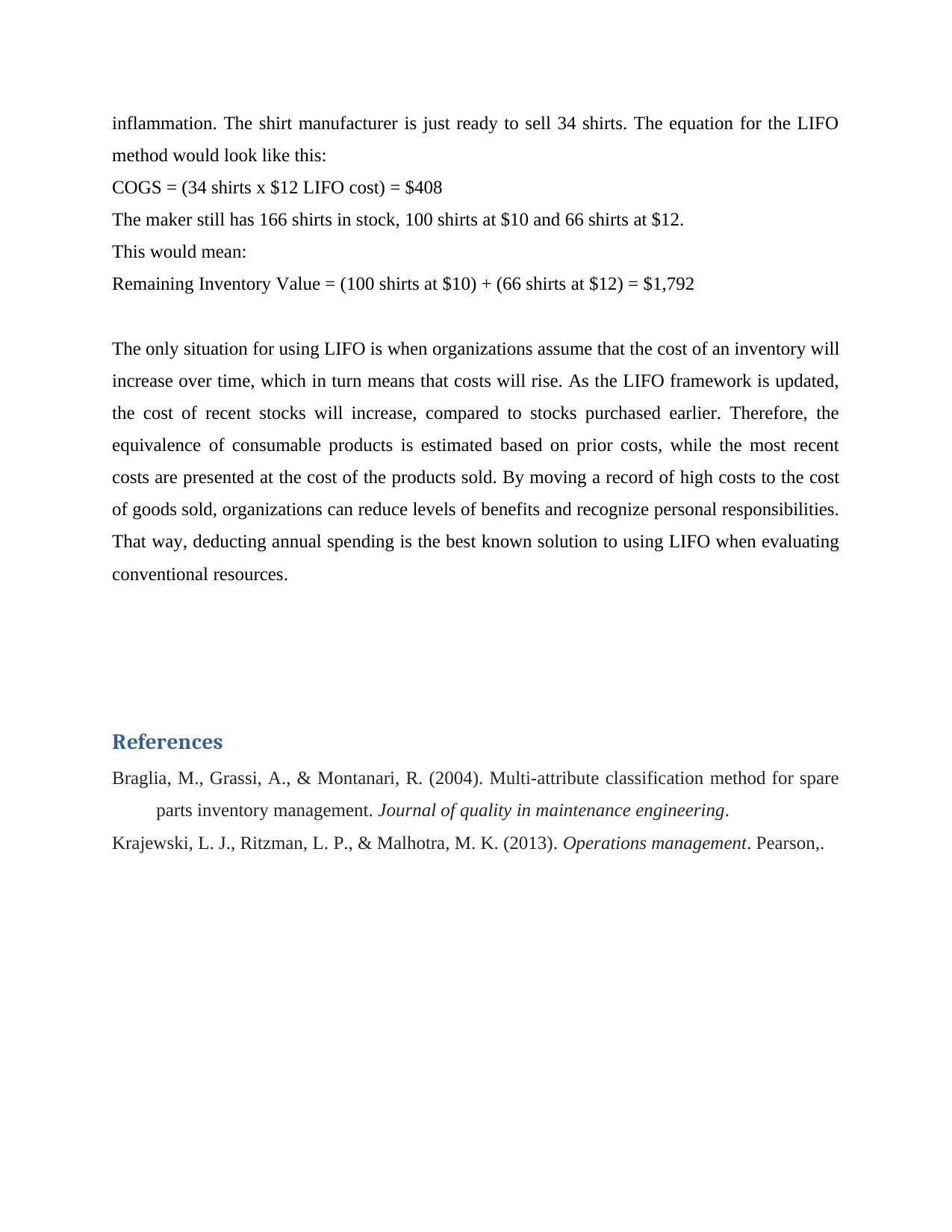ACC 101: Inventory Valuation Methods and Specific Identification
VerifiedAdded on 2023/01/07
|3
|702
|32
Homework Assignment
AI Summary
This assignment delves into the crucial topic of inventory valuation, a key aspect of financial accounting. The solution begins by discussing the Last In, First Out (LIFO) method, recommending it for large businesses, particularly during inflationary periods, due to its ability to reduce tax liabilities by matching current costs with current revenues. It then explains the Lower of Cost or Market (LCM) strategy, used to adjust inventory values when market prices fall below historical costs. The assignment further contrasts LIFO with the First In, First Out (FIFO) method, suggesting FIFO for items with short expiration dates. The provided example illustrates LIFO calculations. Finally, the assignment emphasizes the conditions under which LIFO is most advantageous and concludes with references to relevant academic sources.
1 out of 3









![[object Object]](/_next/static/media/star-bottom.7253800d.svg)